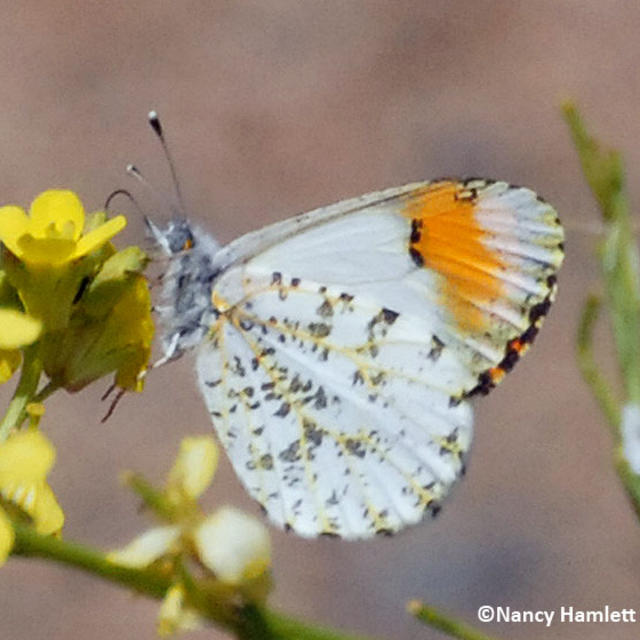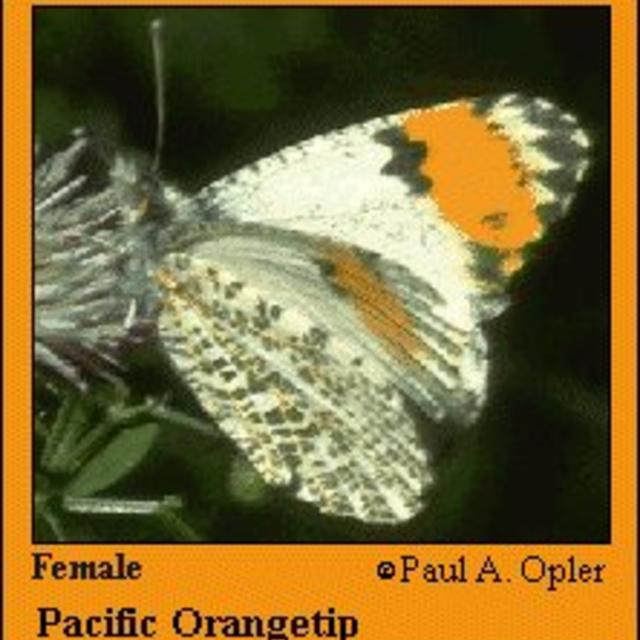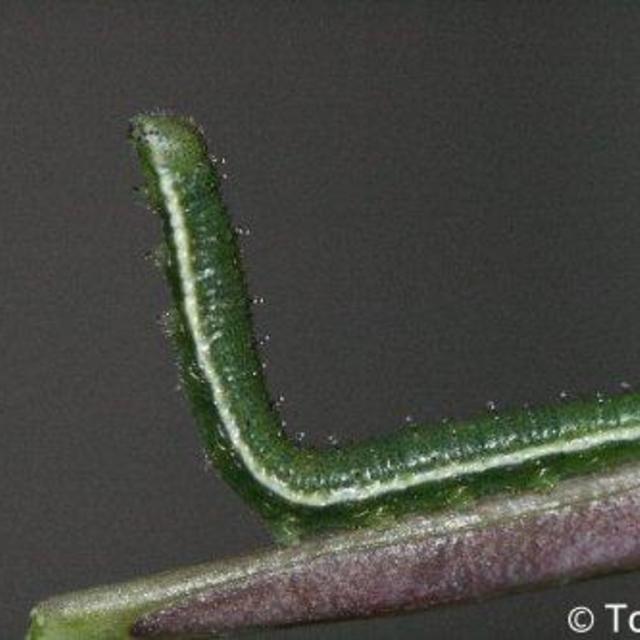Pacific Orangetip
Anthocharis sara Lucas, 1852
Family: Pieridae
Subfamily: Pierinae
Identification: Upperside of male forewing with large, orange-red spot; border of apex dark, narrow. Female spot smaller; dark border with white wedges. Underside of hindwing with scattered, dark-green marbling. Late spring individuals are larger with less black and hyave yellow green marbling below. Some individuals are yellow.
Wing Span: 1 1/16 - 1 1/2 inches (2.7 - 4.0 cm).
Life History: Males patrol, mostly in valleys, for females. Eggs are laid singly near tops of host plants. Young caterpillars feed on flower buds, older ones on flowers and fruits. Chrysalids hibernate.
Flight: One flight during June in Alaska; primary flight on California coast from February-April with a second partial flight from May-June.
Caterpillar Hosts: Plants in the mustard (Brassicaceae) family especially rock cresses such as tower mustard. In California, presence of late flowering \"true\"" mustards (Brassica species) allows extended larval feeding and a partial second flight."
Adult Food: Flower nectar, including that of host mustards, thistles, fiddleneck, and brodiaeas.
Habitat: Open oak woods in hills, orchards, fields, meadows, streamcourses, canyons.
Range: Alaska coast south to Baja California mainly to west of Pacific divide.
Conservation: Conserve restricted populations.
NCGR: G5 - Demonstrably secure globally, though it may be quite rare in parts of its range, especially at the periphery.
Management Needs: Preserve host plant and flyway habitats.
Comments: NULL
Get your BAMONA Gear!
Please donate!
We depend on donations to keep Butterflies and Moths of North America freely available. We want to express our gratitude to all who showed their support by making a contribution this year. You can donate to support this project at any time.
Advertise with us!
Do you have a product or service that you think would interest BAMONA users? If you would like to advertise on this website, contact us by email, or use the contact form and select the "Advertising" category.
Verified Sightings
Displaying 1 - 24 of 490 verified sightings
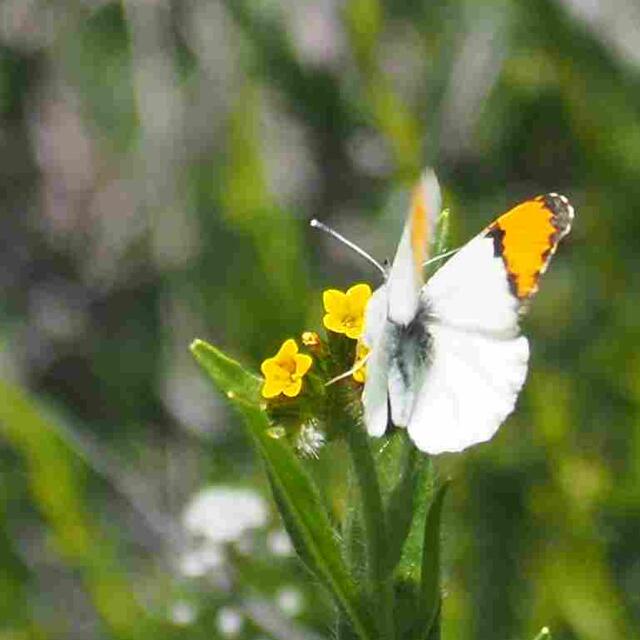
Observation date: Apr 07, 2024
Submitted by: mstanek
Region: Ventura County, California, United States
Verified by: Ken Davenport
Verified date: Apr 09, 2024

Observation date: Mar 21, 2024
Submitted by: shuckabone
Region: Siskiyou County, California, United States
Verified by: Ken Davenport
Verified date: Mar 21, 2024
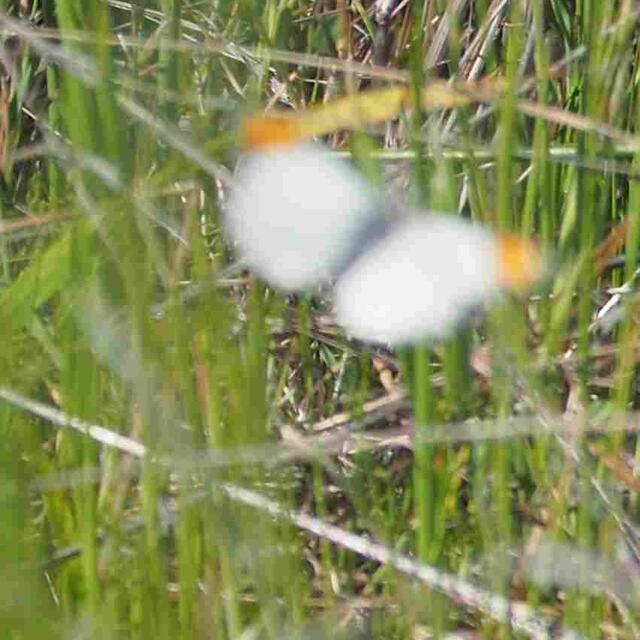
Observation date: Mar 17, 2024
Submitted by: mstanek
Region: Los Angeles County, California, United States
Verified by: Ken Davenport
Verified date: Mar 18, 2024

Observation date: Mar 15, 2024
Submitted by: Zencoyote
Region: San Diego County, California, United States
Verified by: Ken Davenport
Verified date: Mar 17, 2024

Observation date: Mar 17, 2024
Submitted by: Zencoyote
Region: San Diego County, California, United States
Verified by: Ken Davenport
Verified date: Mar 17, 2024

Observation date: Mar 14, 2024
Submitted by: madamirie
Region: Monterey County, California, United States
Verified by: Ken Davenport
Verified date: Mar 15, 2024

Observation date: Mar 08, 2024
Submitted by: madamirie
Region: Monterey County, California, United States
Verified by: Ken Davenport
Verified date: Mar 12, 2024

Observation date: Mar 08, 2024
Submitted by: madamirie
Region: Monterey County, California, United States
Verified by: Ken Davenport
Verified date: Mar 12, 2024

Observation date: Mar 10, 2024
Submitted by: MAKI
Region: Ventura County, California, United States
Verified by: Ken Davenport
Verified date: Mar 11, 2024

Observation date: Feb 18, 2020
Submitted by: butterflies4us
Region: San Diego County, California, United States
Verified by: Ken Davenport
Verified date: Jul 23, 2023

Observation date: Jun 08, 2023
Submitted by: Dobber31
Region: Lake County, California, United States
Verified by: Ken Davenport
Verified date: Jun 10, 2023

Observation date: May 30, 2023
Submitted by: ezeemonee
Region: Los Angeles County, California, United States
Verified by: Ken Davenport
Verified date: Jun 01, 2023

Observation date: May 15, 2023
Submitted by: Dobber31
Region: Santa Clara County, California, United States
Verified by: Ken Davenport
Verified date: May 20, 2023

Observation date: May 11, 2023
Submitted by: ezeemonee
Region: Los Angeles County, California, United States
Verified by: Ken Davenport
Verified date: May 13, 2023

Observation date: May 11, 2023
Submitted by: ezeemonee
Region: Los Angeles County, California, United States
Verified by: Ken Davenport
Verified date: May 13, 2023
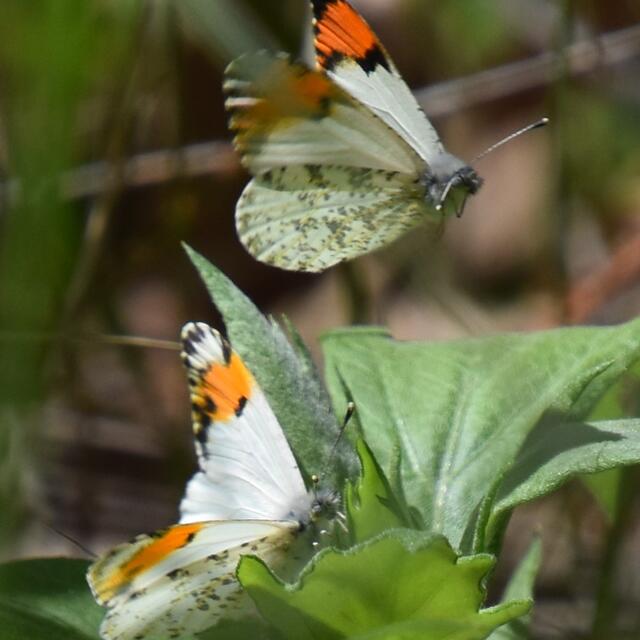
Observation date: Apr 23, 2023
Submitted by: camflies
Region: Ventura County, California, United States
Verified by: Ken Davenport
Verified date: May 07, 2023

Observation date: May 07, 2023
Submitted by: Seth Mueller
Region: San Bernardino County, California, United States
Verified by: Ken Davenport
Verified date: May 07, 2023

Observation date: Apr 30, 2023
Submitted by: Seth Mueller
Region: San Bernardino County, California, United States
Verified by: Ken Davenport
Verified date: Apr 30, 2023

Observation date: Apr 08, 2023
Submitted by: Will K
Region: San Luis Obispo County, California, United States
Verified by: Ken Davenport
Verified date: Apr 30, 2023
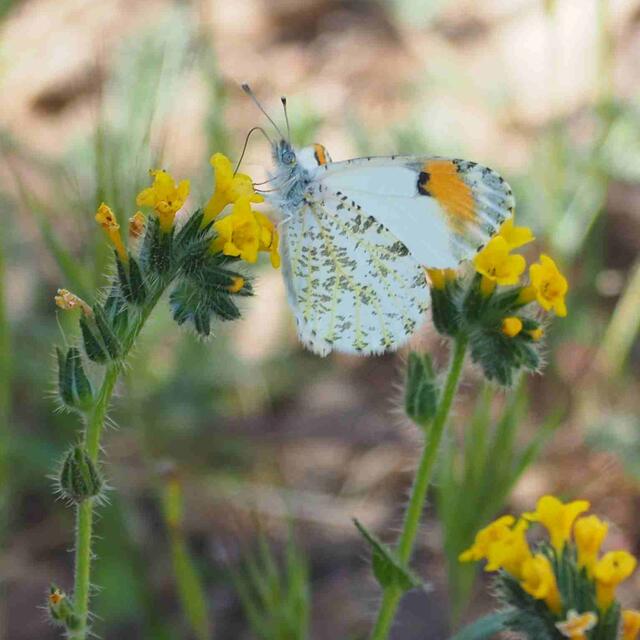
Observation date: Apr 26, 2023
Submitted by: mstanek
Region: Ventura County, California, United States
Verified by: Ken Davenport
Verified date: Apr 27, 2023

Observation date: Apr 25, 2023
Submitted by: Birder2
Region: Sherman County, Oregon, United States
Verified by: Ken Davenport
Verified date: Apr 26, 2023
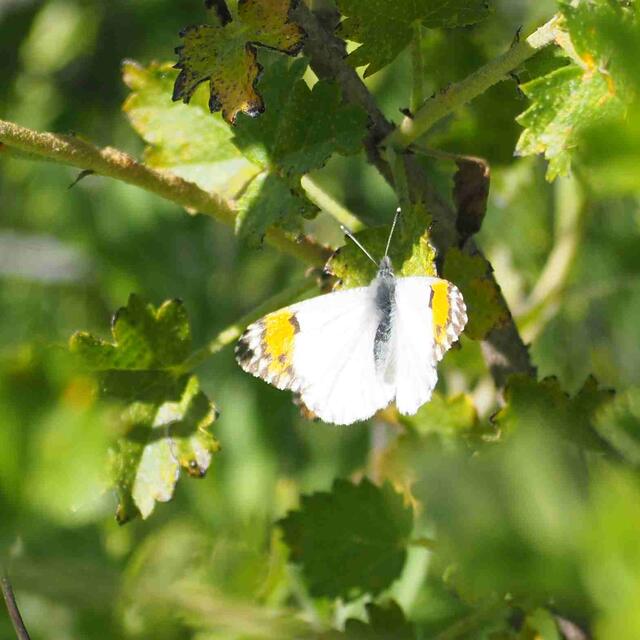
Observation date: Apr 19, 2023
Submitted by: mstanek
Region: Ventura County, California, United States
Verified by: Ken Davenport
Verified date: Apr 20, 2023

Observation date: Mar 12, 2023
Submitted by: Seth Mueller
Region: San Bernardino County, California, United States
Verified by: Ken Davenport
Verified date: Mar 19, 2023

Observation date: Mar 12, 2023
Submitted by: mstanek
Region: Ventura County, California, United States
Verified by: Ken Davenport
Verified date: Mar 13, 2023
- 1 of 21
- next ›




